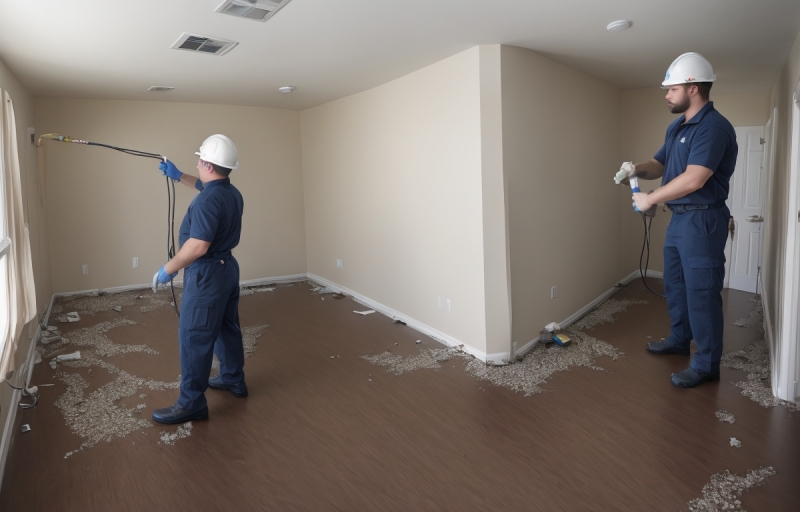Water damage in multi-unit buildings can be a nightmare. Whether it’s a burst pipe, a leaking roof, or an overflowing bathtub, the damage can spread quickly, affecting multiple units and causing significant structural issues. If not handled properly, it can lead to mold growth, property deterioration, and even legal disputes between tenants and landlords.
So, what should you do when water damage strikes? In this guide, we’ll walk you through the essential steps to handle water damage in multi-unit buildings effectively. From immediate actions to professional water damage restoration, we’ll cover everything you need to know to protect your property and ensure a smooth recovery process.
Step 1: Assess the Situation Immediately
The first step in handling water damage is to assess the situation as quickly as possible. Water spreads rapidly, and the longer it sits, the more damage it causes. Here’s what you need to do:
- Identify the Source: Is the water coming from a burst pipe, a leaking appliance, or an external source like rainwater? Finding the source is crucial to stopping further damage.
- Determine the Extent: Check how far the water has spread. Is it confined to one unit, or has it seeped into multiple floors and walls?
- Check for Safety Hazards: Water and electricity don’t mix. If there’s standing water near electrical outlets, turn off the power immediately to prevent electrocution.
Once you’ve assessed the situation, it’s time to take action. If the damage is severe, calling a professional restoration service is your best bet.
Step 2: Stop the Water Source
Stopping the water source is critical to preventing further damage. If the issue is a burst pipe, shut off the main water supply. If it’s a leaking appliance, unplug it and remove any standing water around it.
For external water sources like heavy rain or flooding, use sandbags or other barriers to prevent more water from entering the building. If the damage is beyond your control, contacting an emergency service for immediate assistance is the best course of action.
Step 3: Notify Affected Parties
In a multi-unit building, communication is key. Notify all affected tenants, landlords, or property managers about the situation. This helps prevent further damage and ensures that everyone is aware of the necessary precautions.
If the damage is extensive, tenants may need to relocate temporarily while reconstruction services take place. Keeping open communication with all parties involved will make the process smoother and reduce potential conflicts.
Step 4: Begin Water Extraction and Drying
Once the water source is stopped, the next step is to remove standing water and start the drying process. This is where professional water damage restoration services come in handy.
Experts use specialized equipment like industrial pumps, dehumidifiers, and air movers to extract water and dry out affected areas. This step is crucial to preventing mold growth and structural damage.
Step 5: Inspect for Mold and Contaminants
Water damage often leads to mold growth, which can pose serious health risks. Mold thrives in damp environments, and if left unchecked, it can spread rapidly throughout the building.
Professional mold remediation services can inspect the affected areas, remove mold, and ensure that the building is safe for occupancy. If biohazards are present, specialized biohazard clean-up may be necessary.
Step 6: Repair and Restore the Property
After the water is removed and the area is dried, it’s time for repairs. Depending on the extent of the damage, this may include:
- Replacing damaged drywall and flooring
- Repairing electrical and plumbing systems
- Repainting and restoring interiors
Hiring a professional property restoration service ensures that the repairs are done correctly and efficiently.
Step 7: Prevent Future Water Damage
Once the restoration is complete, take steps to prevent future water damage. Regular maintenance, routine inspections, and installing water detection systems can help catch issues before they escalate.
Additionally, educating tenants on proper water usage and emergency protocols can go a long way in preventing future incidents.
Conclusion
Handling water damage in a multi-unit building requires quick action, effective communication, and professional assistance. By following these steps, you can minimize damage, protect your property, and ensure a smooth restoration process.
At Projekt Restoration, we are COMMITTED TO QUALITY SERVICE. Call Us Now! 855-933-7935 for fast, friendly, and professional service. Whether you need fire damage restoration, mold remediation, or reconstruction services, we’ve got you covered.
FAQs
How long does water damage restoration take?
The duration of water damage restoration depends on the severity of the damage. Minor cases may take a few days, while extensive damage could take weeks. Professional restoration services can provide a more accurate timeline after an assessment.
Can I handle water damage on my own?
While minor leaks can be managed with DIY methods, significant water damage requires professional intervention. Experts have the necessary equipment and expertise to ensure thorough drying and prevent mold growth.
What are the signs of hidden water damage?
Signs of hidden water damage include musty odors, peeling paint, warped flooring, and unexplained increases in water bills. Regular inspections can help detect issues early. Learn more about how to identify hidden water damage early.
Does insurance cover water damage restoration?
Most homeowner’s insurance policies cover water damage caused by sudden and accidental incidents, such as burst pipes. However, gradual damage due to neglect may not be covered. It’s best to check with your insurance provider for details.
How can I prevent mold after water damage?
To prevent mold, ensure thorough drying of affected areas, use dehumidifiers, and address leaks promptly. Professional mold remediation services can help eliminate mold and prevent future growth.

